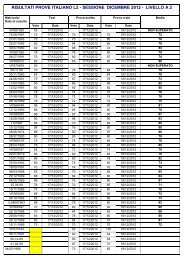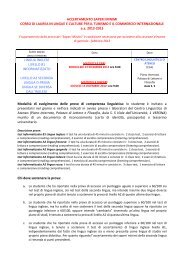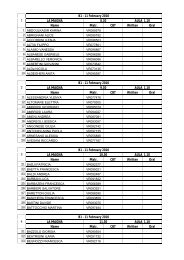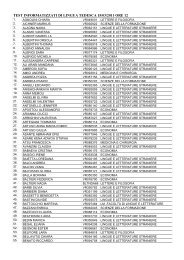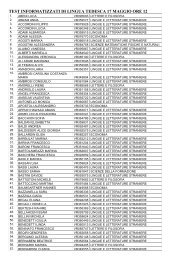Charles Dalli
Charles Dalli
Charles Dalli
Create successful ePaper yourself
Turn your PDF publications into a flip-book with our unique Google optimized e-Paper software.
Margaritus of Brindisi, and his Genoese successors in the Sicilian<br />
admiralty after 1194 – William Grasso and his son in law Henry Pescatore,<br />
an ambitious privateer who for some time lured Genoa into his ambitious<br />
project to take control of the island of Crete. The set up changed very little<br />
in the later Middle Ages. Fifteenth century attempts by the municipal<br />
authorities in town, frequently backed by Crown appointed officials, to<br />
force wealthier villagers to move to permanent residence within the walls<br />
Mdina generally failed. There seemed to be much villager resistance at<br />
these blatant attempts at compulsory urbanization. There must have been<br />
clear social and economic advantages attached to continued residence in<br />
the undefended open settlements of the Maltese countryside, despite the<br />
fact that the island bore its share of enemy attacks, as did Gozo. From a<br />
register of over 100 rahal toponyms across the Maltese countryside, a<br />
substantial number referred to uninhabited estates by 1400. Nevertheless, it<br />
is difficult to translate toponymic evidence into a broader geographic<br />
frame – for one thing, it remains unclear how many of the rahal<br />
placenames denoted anything beyond simple farmsteads, to start off with.<br />
A clear difference between the two islands remains evident. Somewhat<br />
enigmatically, contrary to the Maltese network of villages, on the sister<br />
island of Gozo, human settlement seems to have been agglomerated from<br />
the 1300s to the 1600s at the terra – the castle and its Rabat. The odd<br />
reference to rahl type toponyms on Gozo cannot be confirmed. It must be<br />
added that the island of Pantelleria too retained its villages in this period,<br />
despite its repeated targeting by raiders. There may have been other<br />
causes, besides the quotient of enemy attacks per island, guiding the<br />
emergence, survival or disappearance of open undefended villages,<br />
including social ones. At the risk of speculating on the back of an already<br />
hotly debated document, one might suggest that the large number of<br />
Christian serf families documented on Gozo in 1240 created a different set<br />
of conditions when compared to the much larger Muslim serf populations<br />
on Malta – and also perhaps Pantelleria. Villages in the islands were<br />
certainly targeted in a punitive attack carried out by James II’s admiral<br />
Bernat de Sarria against the insular subjects of Frederick III of Sicily.<br />
Evidence for parish organization outside the castrum maris and its borgo<br />
comes to light at the end of the fourteenth century. The survival of<br />
toponyms long after the transformation of social or cultural realities<br />
underpinning them is a proven trend. Around 1394, the pilgrim notary<br />
Nicola de Martoni reported the prosperity of Gozo and Malta under count<br />
Artale de Alagona. His figures of 400 houselholds on Gozo, and 4000 on<br />
Malta seem a bit inflated, but they do convey the general positive<br />
perception of the Italian vistor.<br />
Militia rosters and watch lists from 1417 and 1419 respectively studied<br />
by Godfrey Wettinger, suggest an adult male population on Malta of about<br />
79



